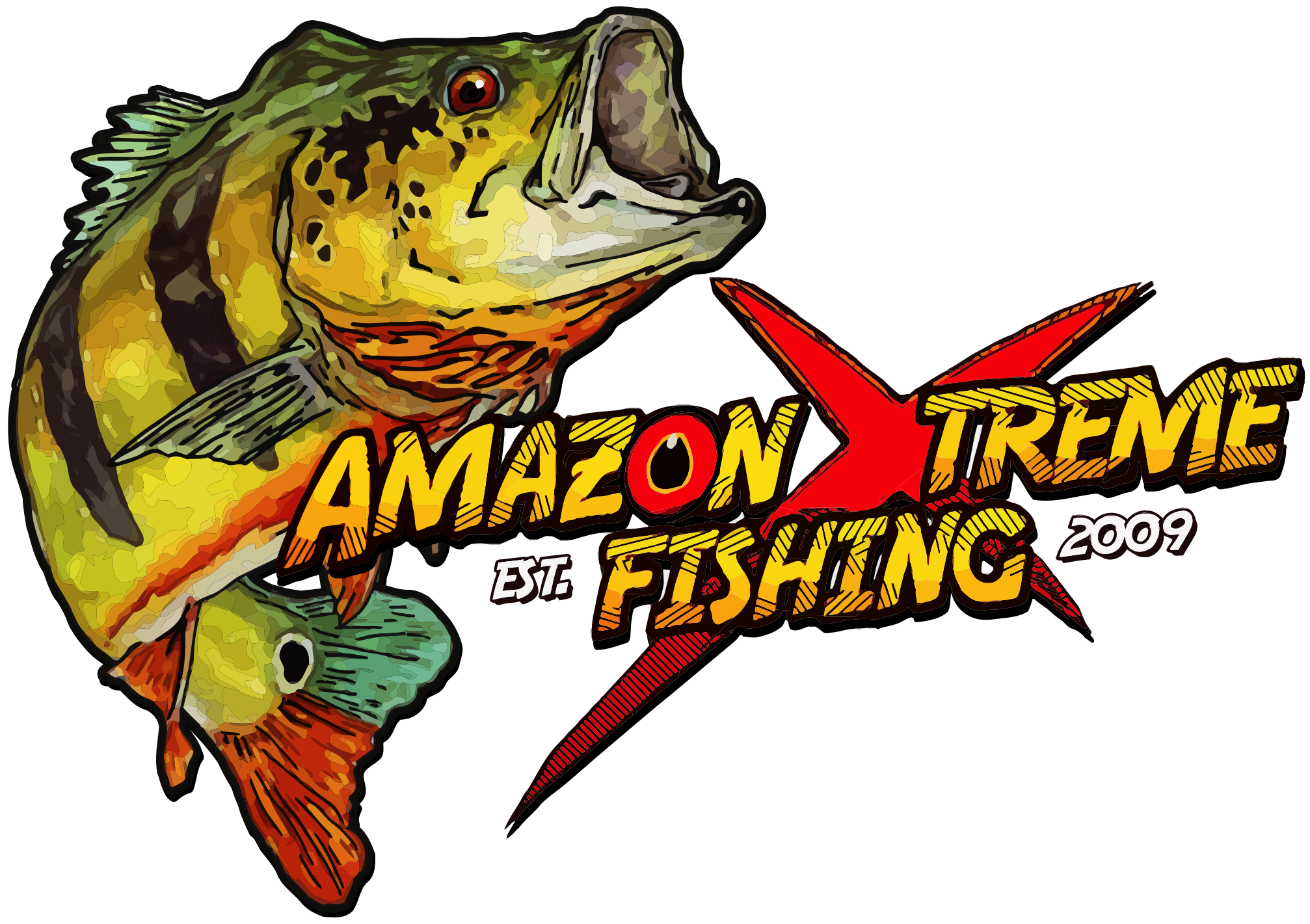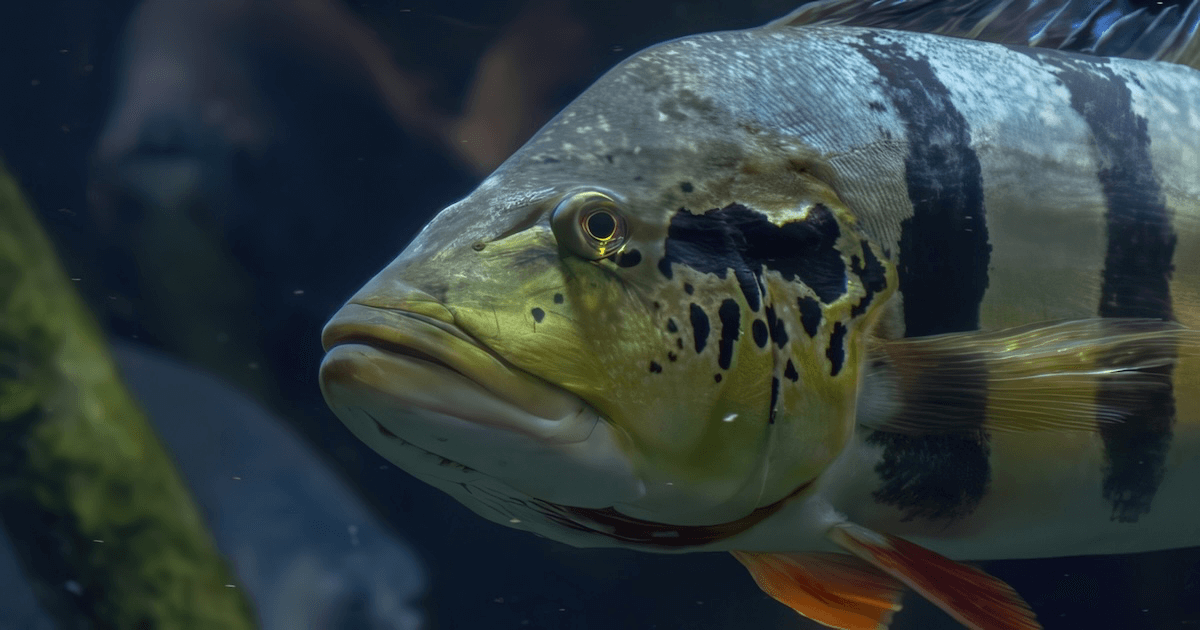
Amazon Fish Encyclopedia
The Topwater Predator
Peacock Bass Species
Amazon
Fish Species Guide
Species Fact Sheet
Peacock Bass Information
The Peacock Bass, also natively known as Tucunaré (Tuh-Cun-Nah-Reh) is a formidable predator known for its aggressive hunting style and powerful strikes. Unlike many other freshwater fish, they are ambush predators that use structure and cover to their advantage when hunting. Their beautiful coloration and fighting spirit make them one of the most sought-after gamefish in the Amazon region.
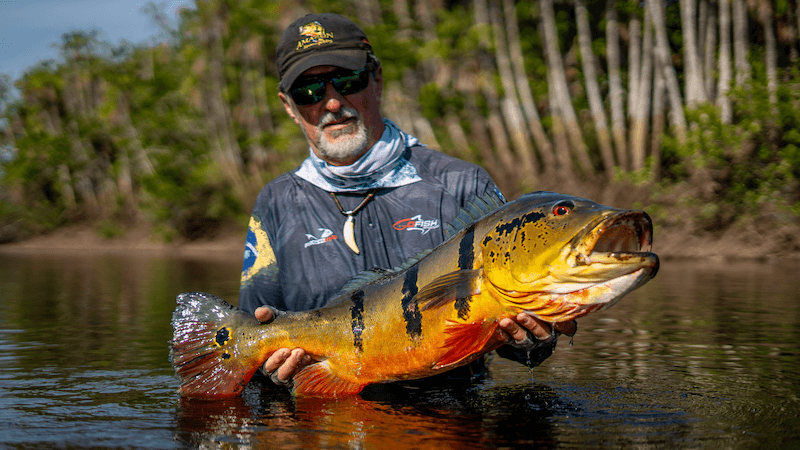
Catch Distribution
The estimated potential yield for Peacock Bass is approximately 4,300 tons, with the Central Amazon contributing the largest share at 52%. The Tocantins region accounts for 27%, followed by the Peruvian Amazon (8%) and the Estuary region (6%). A significant portion of the Central Amazon catch comes from the large Balbina Dam reservoir near Manaus.
Natural History
The Peacock Bass commercial fish group consists of three to four species, all of which are aggressive piscivores that primarily inhabit calm waters. However, some species are also common in beach areas of river channels during the low-water season. Peacock Bass are widely regarded as the most important sport fishing species due to their striking appearance and powerful fighting ability.
Different Colors & Species
Peacock Bass are diverse in coloration and patterns, making them some of the most visually striking fish in the Amazon. They belong to the genus Cichla and are divided into several species, each with unique characteristics.
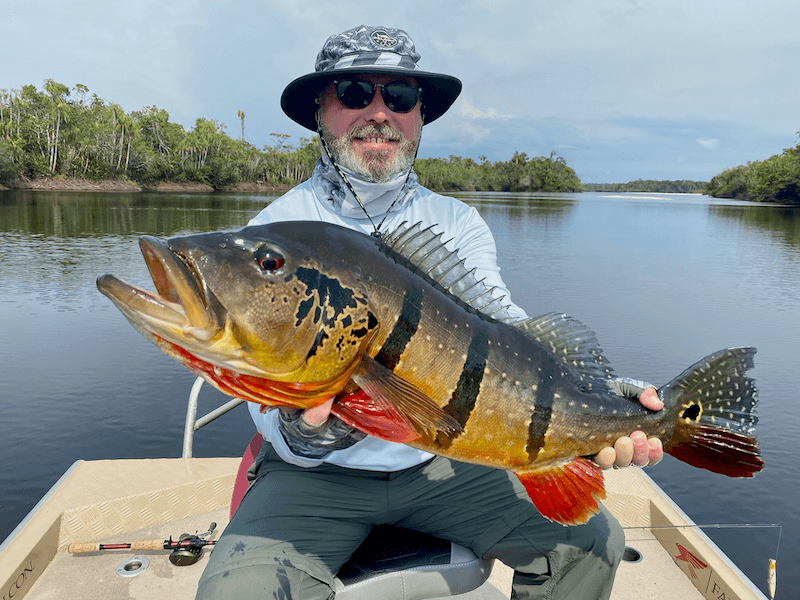
Cichla temensis
Speckled Peacock Bass
- • Largest species, reaching over 30 lbs
- • Seasonal color transformation
- • Changes from dark speckled patterns to brilliant golden-yellow body
- • Distinct black bars when in breeding colors
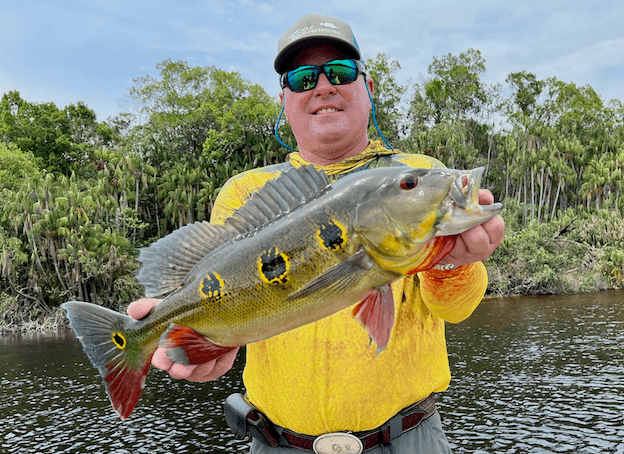
Cichla monoculus
Butterfly Peacock Bass
- • Bright yellow-to-golden coloration
- • Single black spot near tail
- • Smaller but extremely aggressive
- • Popular among sport fishermen
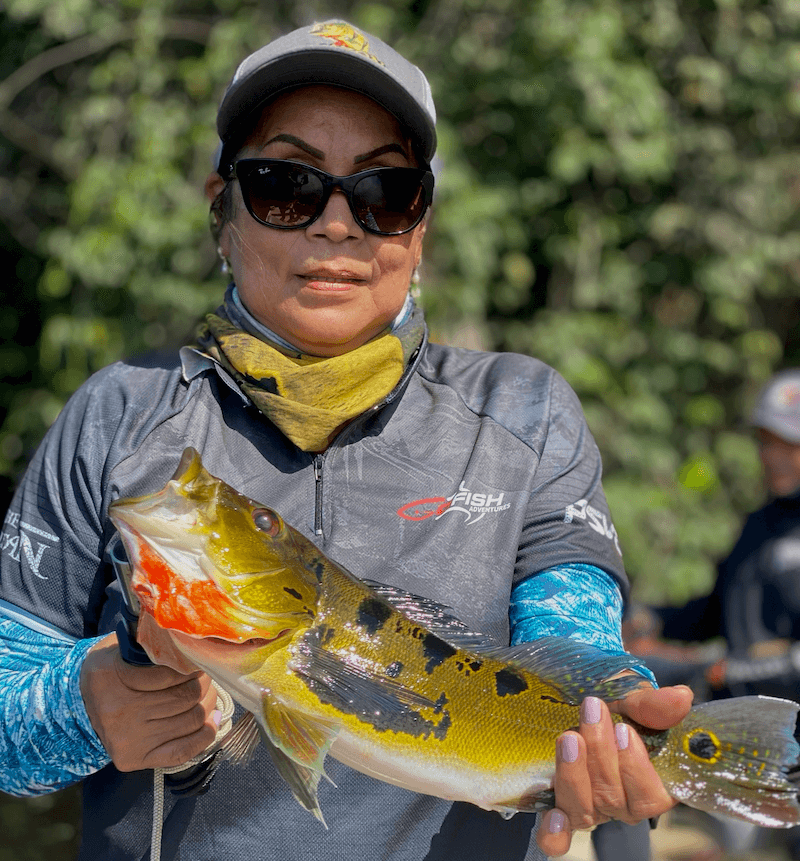
Cichla orinocensis
Orinoco Peacock Bass
- • Deep greenish-gold body coloration
- • Multiple ocelli along lower side
- • Found in Orinoco and Amazon basins
- • Prefers structured habitat
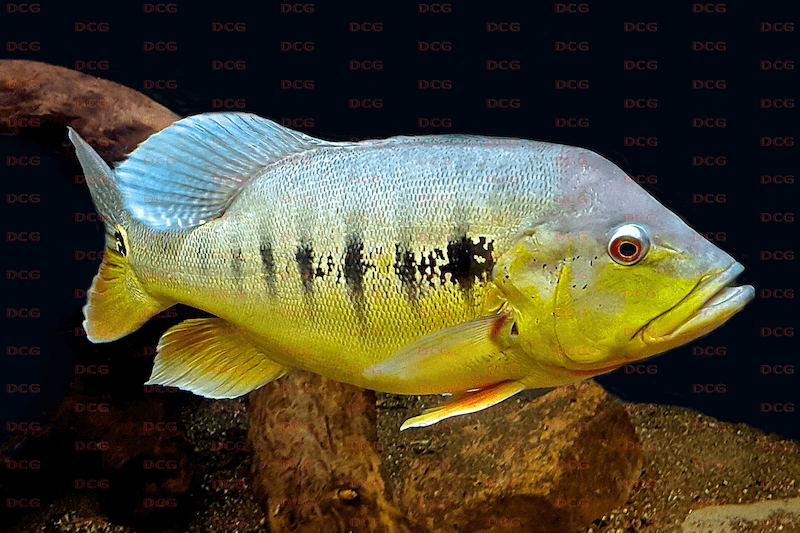
Cichla intermedia
Royal Peacock Bass
- • Fainter markings overall
- • Distinctive blueish-green tint on flanks
- • Found primarily in blackwater rivers
- • Considered a rarer species
Each species has unique behaviors and habitat preferences, but all share the same explosive strikes and powerful fights that make Peacock Bass legendary among sport anglers.
Habitat & Distribution
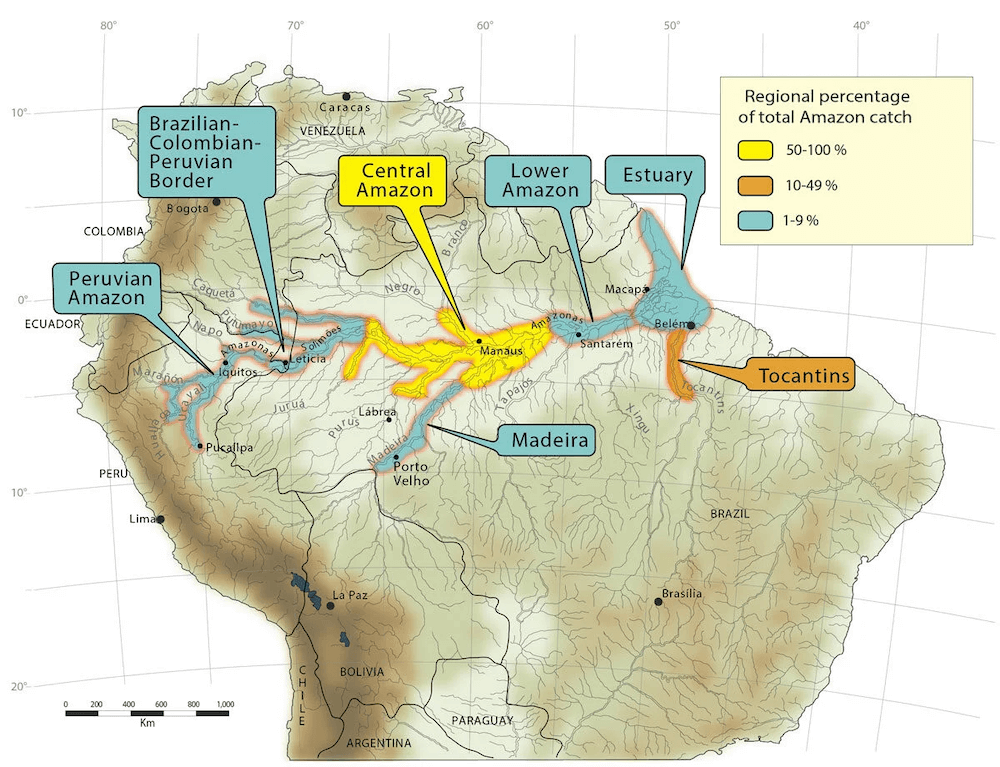
Distribution of Peacock Bass catch. Source: Barthem, R., Goulding, M. 2007. An unexpected ecosystem: the Amazon as revealed by fisheries. Missouri Botanical Garden Press.
Peacock Bass are found throughout the Amazon and Orinoco River basins, thriving in slow-moving waters with plenty of cover. They are ambush predators that use structure like submerged logs, overhanging vegetation, and rock formations as hunting grounds. Some species have been successfully introduced to various locations outside their native range.
- • Juveniles hide among roots
- • Rich in prey species
- • Abundant cover
- • Oxbow lakes & tributaries
- • Blackwater rivers
- • Man-made reservoirs
- • Submerged structures
- • Overhanging vegetation
- • Rock formations
Behavior & Diet
Peacock Bass are pure hunters, feeding primarily on live fish but also attacking crustaceans and even small mammals in some cases. Their aggressive nature and powerful strikes make them one of the most exciting gamefish to target.
- • Small fish and tetras
- • Surface insects
- • Small crustaceans
- • Attack smaller bass
- • Territorial behavior
- • Aggressive instincts
- • Explosive ambush attacks
- • Follows and stalks prey
- • Surface predation tactics
- • Full-speed strikes
- • Multiple attack attempts
- • Surface leaping
As apex predators in their environment, Peacock Bass help control prey fish populations and maintain ecosystem balance through their aggressive hunting behavior.
Fishing Techniques & Best Practices
Targeting Peacock Bass is pure adrenaline. They slam lures with incredible power, often requiring fast retrieves and precise casts. Their explosive strikes and powerful fights make them one of the most exciting gamefish in freshwater.
Best Techniques
- Topwater Action: Large popper lures, stick baits, and buzzbaits
- Subsurface: Jerkbaits, swimbaits, and crankbaits
- Fly Fishing: Large streamer flies and deceivers
Recommended Gear
- Rod: Medium-heavy to heavy-action (20-50 lb test)
- Reel: High-speed baitcasting or spinning reel
- Line: Braided (30-65 lb test)
- Hooks: 3/0 to 5/0 heavy-duty hooks
Pro Tips
- • Cast near structures like logs and overhangs – that's where the monsters hide!
- • Use fast, aggressive retrieves to trigger reaction strikes
- • Be prepared for multiple strikes – they often attack several times before committing
Conservation & Sustainability
Due to their popularity as game fish, Peacock Bass populations remain stable, but habitat destruction and overfishing in some areas have raised concerns. Their successful introduction in places like Florida and Puerto Rico has created new fishing opportunities while demonstrating their adaptability.
Catch & Release Best Practices
Minimize injury during hook removal
Support fish until fully recovered
Follow local regulations
Support local conservation efforts
Cultural Significance & Fun Facts
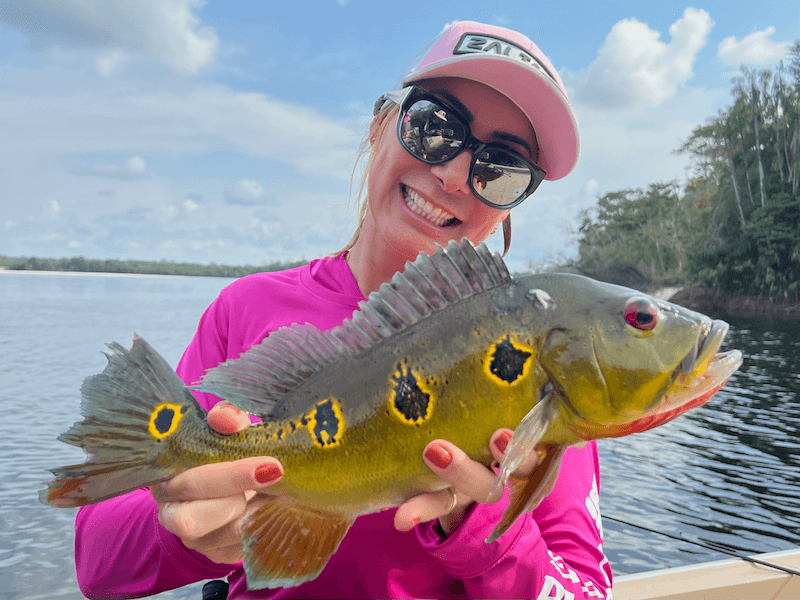
Name Origin
"Tucunaré" means "friend of the tree" in the indigenous Tupi language, referring to their habit of hunting near submerged trees.
Global Presence
Successfully introduced into Florida & Puerto Rico as a sport fish, where they have established thriving populations.
Unique Parenting
Unlike other cichlids, they don't build nests but protect free-swimming fry fiercely, showing remarkable parental care.
Color Changes
Can change colors depending on their mood and spawning cycle, displaying vibrant patterns during breeding season.

